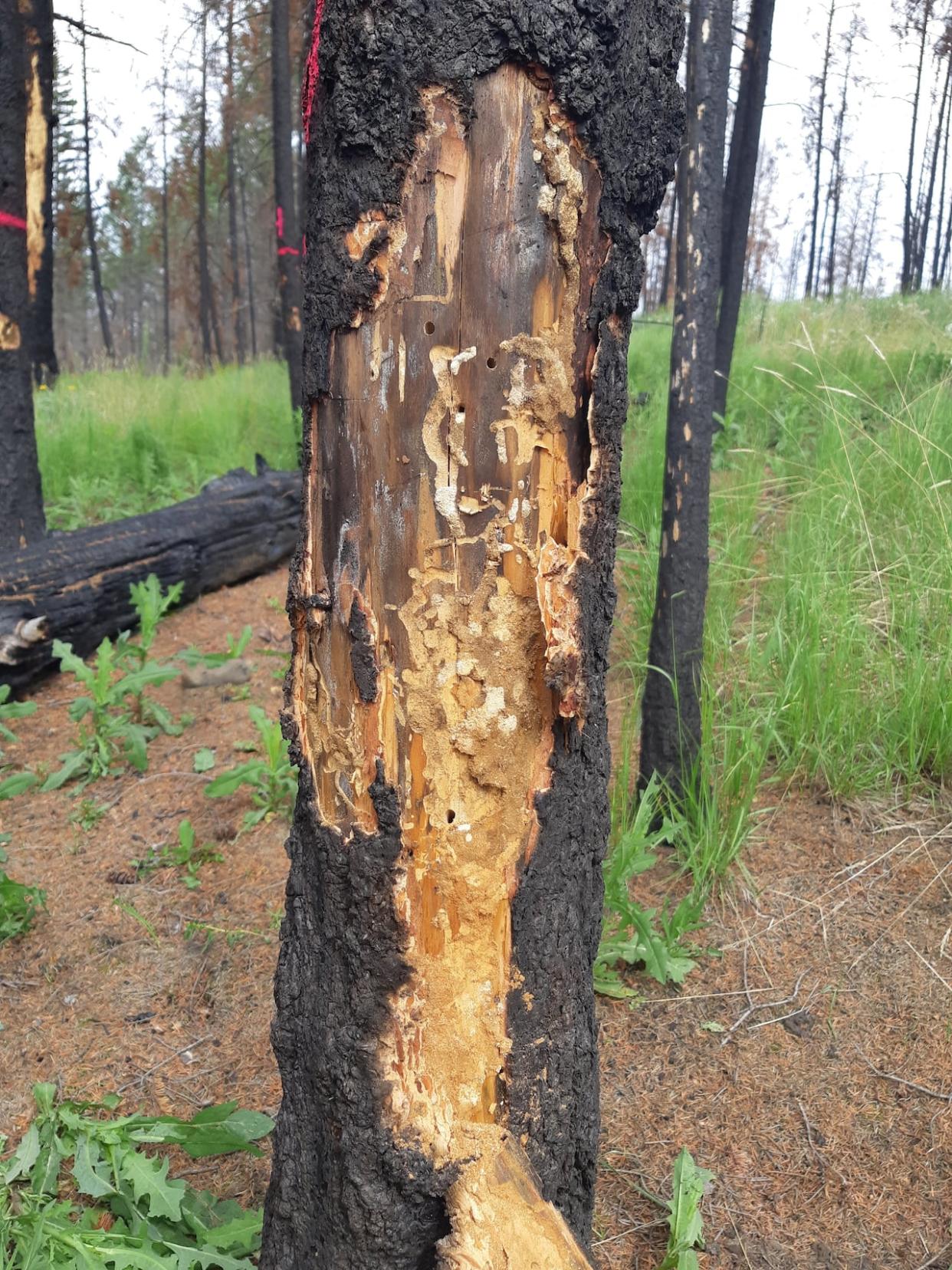Some insects feast on burnt trees after wildfires. Experts worry they could cause further destruction

As wildfires intensify, experts worry tree-destroying insect populations may grow in their aftermath.
As burnt trees take up more space in B.C. forests, so do insects that feast off of them, like wood borers and bark beetles — including the Douglas fir beetle and western pine beetle.
"Firefighters are busy during fires, and then the entomologists get busy afterwards," said Lorraine Maclauchlan, entomologist with B.C.'s Ministry of Forests.
Bark-destroying insects are attracted to dead and weakened trees that have been ravaged by fire, and while these insects are important for the natural decomposition of burnt trees, Maclauchlan says if they grow in population too rapidly, they can cause serious damage by going after live trees.

As burnt trees take up more space in B.C. forests, so do insects that feast off of them — like this adult Douglas fir beetle, which grows to about the size of a grain of rice. (Erin Stewart and Kate Kitchens/UBC Forest Insect Disturbance Ecology Lab)
"When you have year after year of fire, they build up in number."
Maclauchlan says intense drought across the province this year is an added wrinkle: there are many trees that are alive but weakened by drought, that are the perfect target for the insects.
"They're not only attacking fire-damaged trees but they're going out into what we call the green setting, and they are killing these trees," Maclauchlan said.
'Jackpot snack'
Weakened trees left behind by wildfires are the "jackpot snack" for these insects, according to Kate Kitchens, a PhD candidate at the University of British Columbia.
Up to two-thirds of trees that survive a wildfire can be later killed by insects for years after the fire, says Kitchens.
"It's not an insignificant amount of trees you could have die," she said.
Kitchens is studying the landscape of the devastating Elephant Creek fire from 2017, where high levels of bark-eating insects remain, killing trees after more than five years.
"It's definitely a huge concern right now," said Kitchens. "We just haven't managed for these problems at these scales before."
She expects more insect outbreaks to occur in the years to come, in the fire-damaged forests from both the 2021 and 2023 wildfire seasons.

An adult round-headed woodborer, commonly known as a Whitespotted sawyer, is pictured. Up to two-thirds of trees that survive a wildfire can be later killed by insects for years after the fire, says PhD candidate Kate Kitchens. (Kate Kitchens/UBC Forest Insect Disturbance Ecology Lab)
Etienne Belanger, from the Forest Products Association of Canada (FPAC), says these insects could also have an impact on the logging industry.
Not only coud they attack living trees, but when populations increase, they could also attack trees sitting in log piles at mills, waiting to be shipped or processed.
"They might target the trees we have harvested," said Belanger.
Kitchens says there are ways to prevent the spread of these insects. One is to influence where the beetles go, using packets of artificial pheromones to detract insects from certain forests.
Another way is to increase the biodiversity of a forest, as certain bark-eating insects can more easily proliferate where there is a single type of tree.
Maclauchlan says the province is monitoring the situation and taking measures in some areas.
"We're not going to manage it everywhere, but we could lessen the impact," said Maclauchlan.


